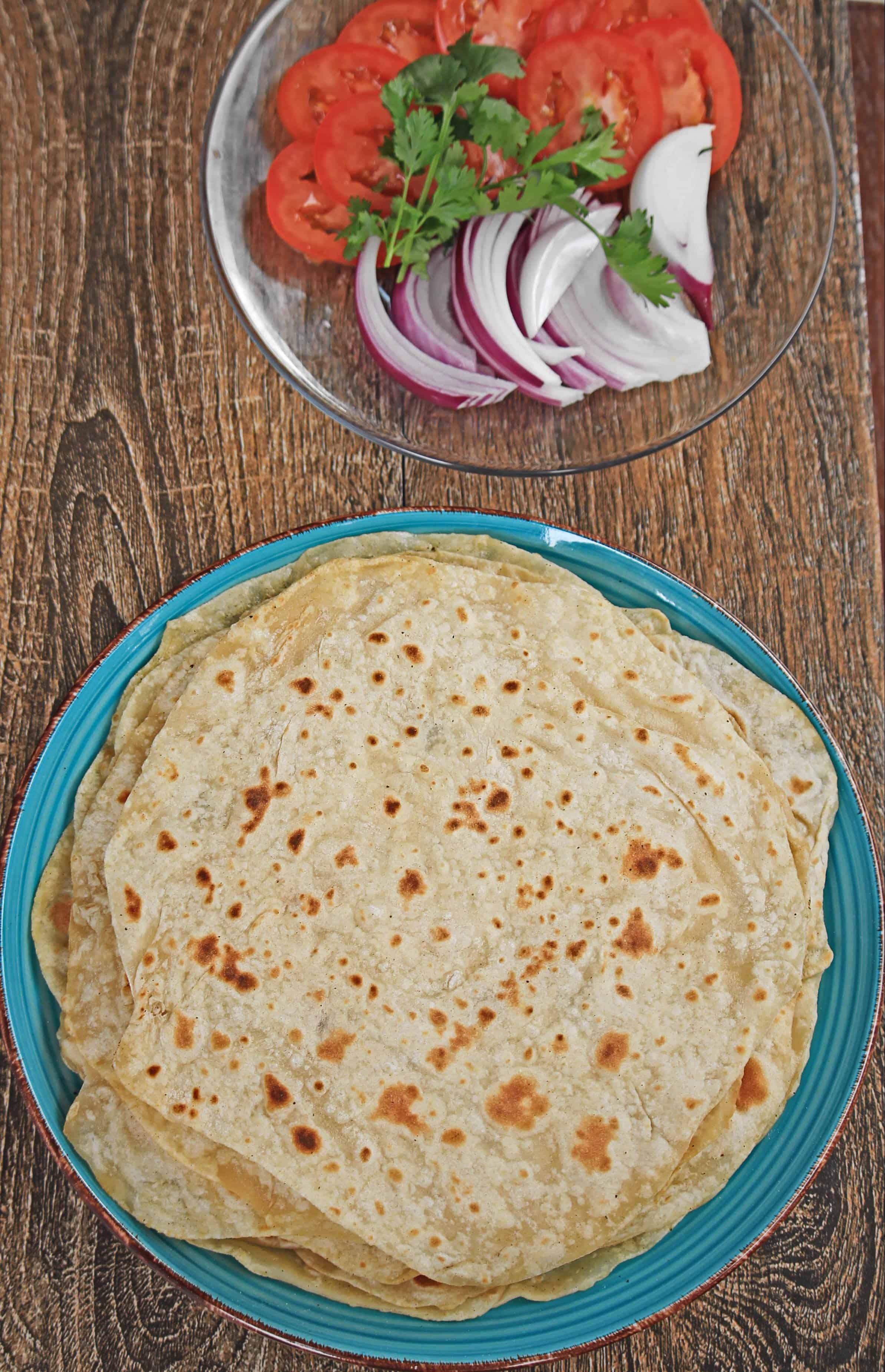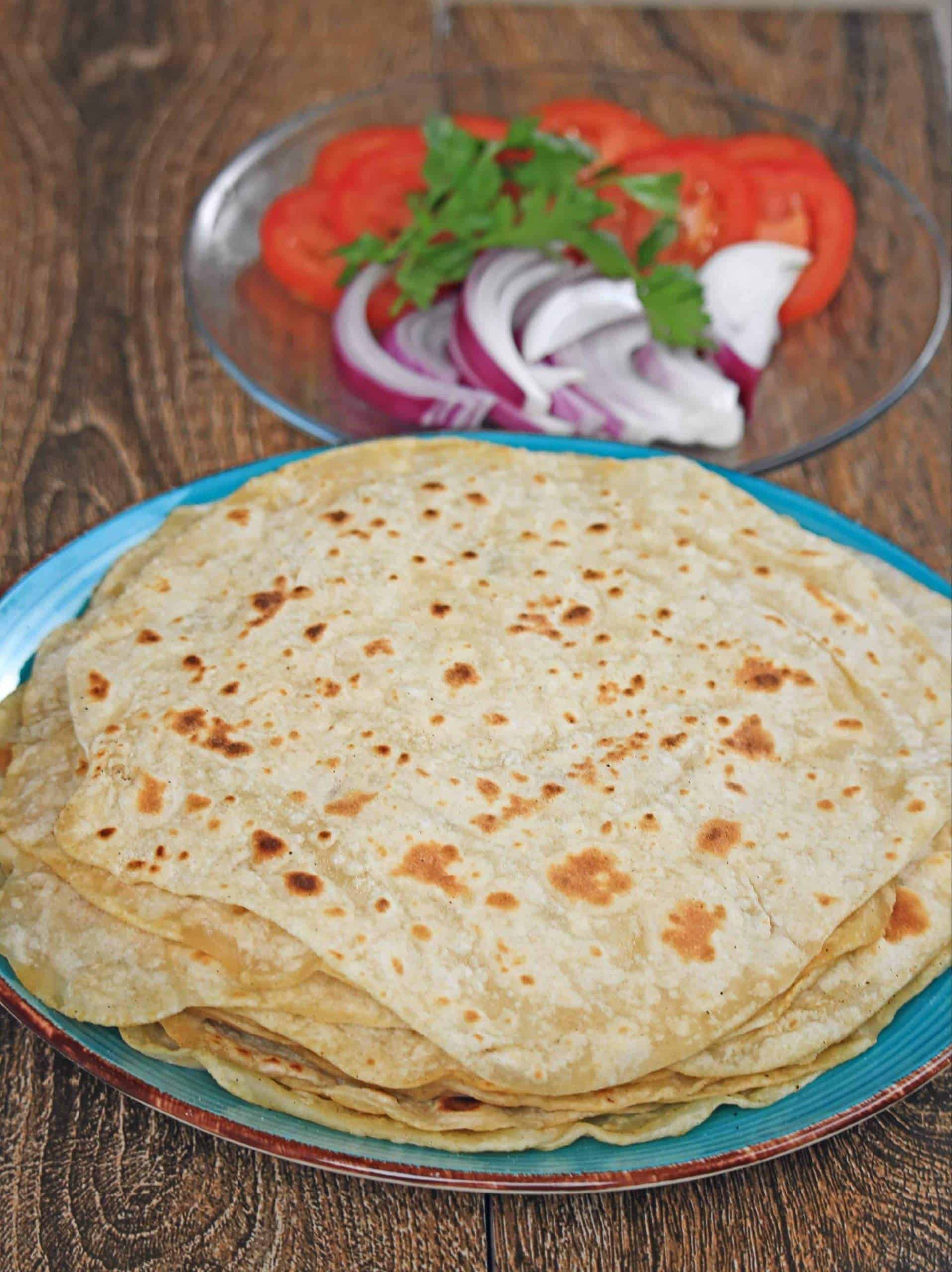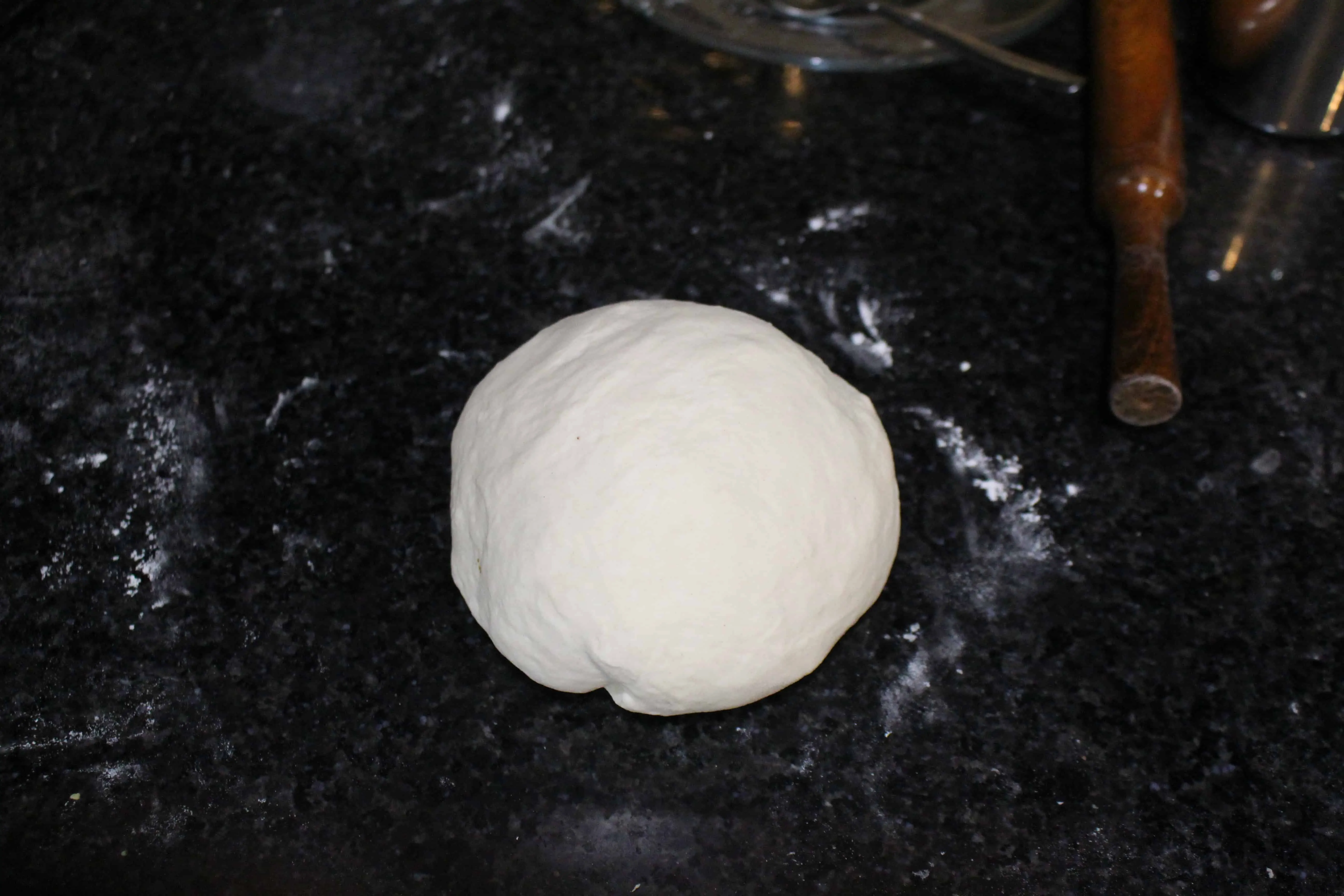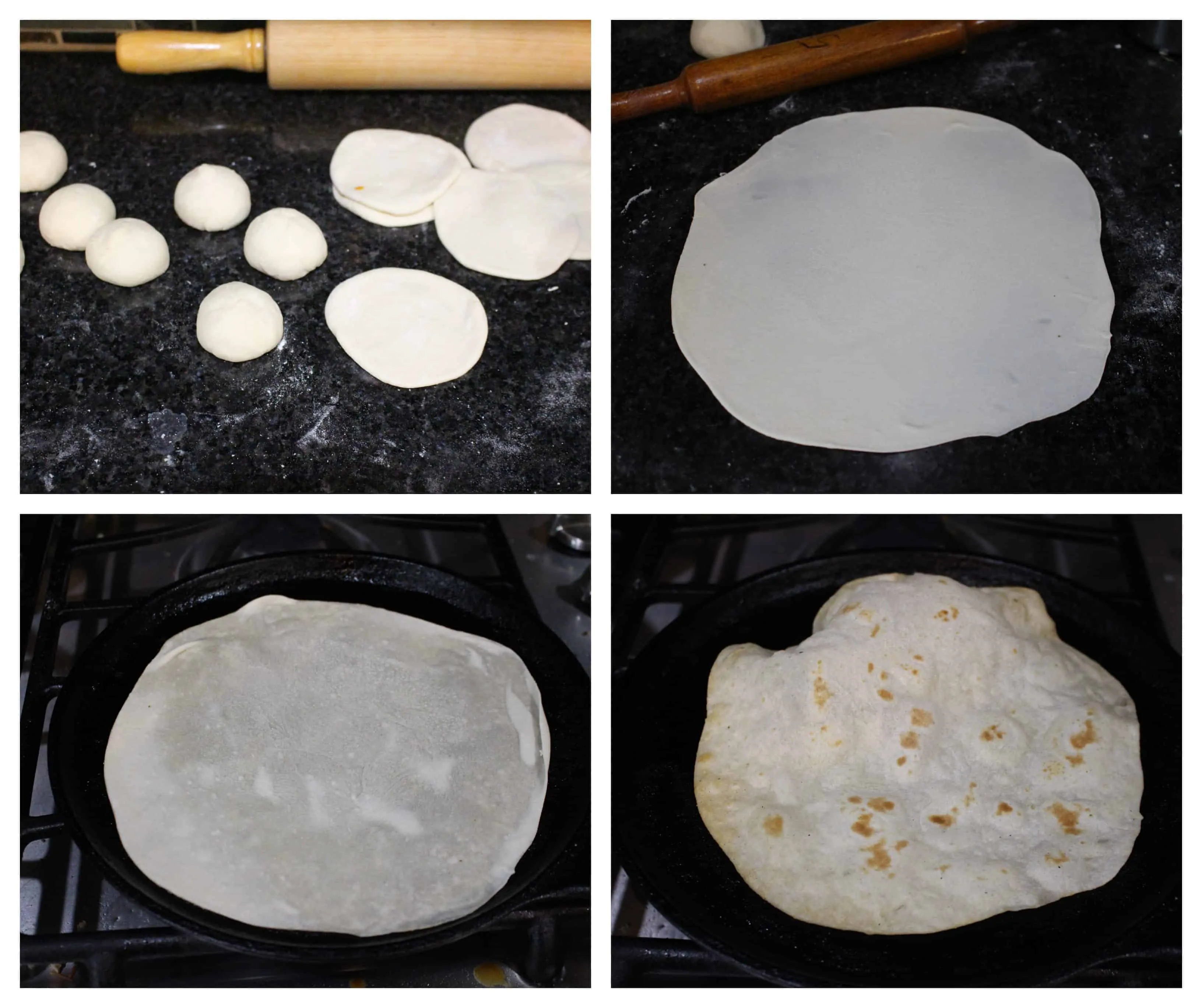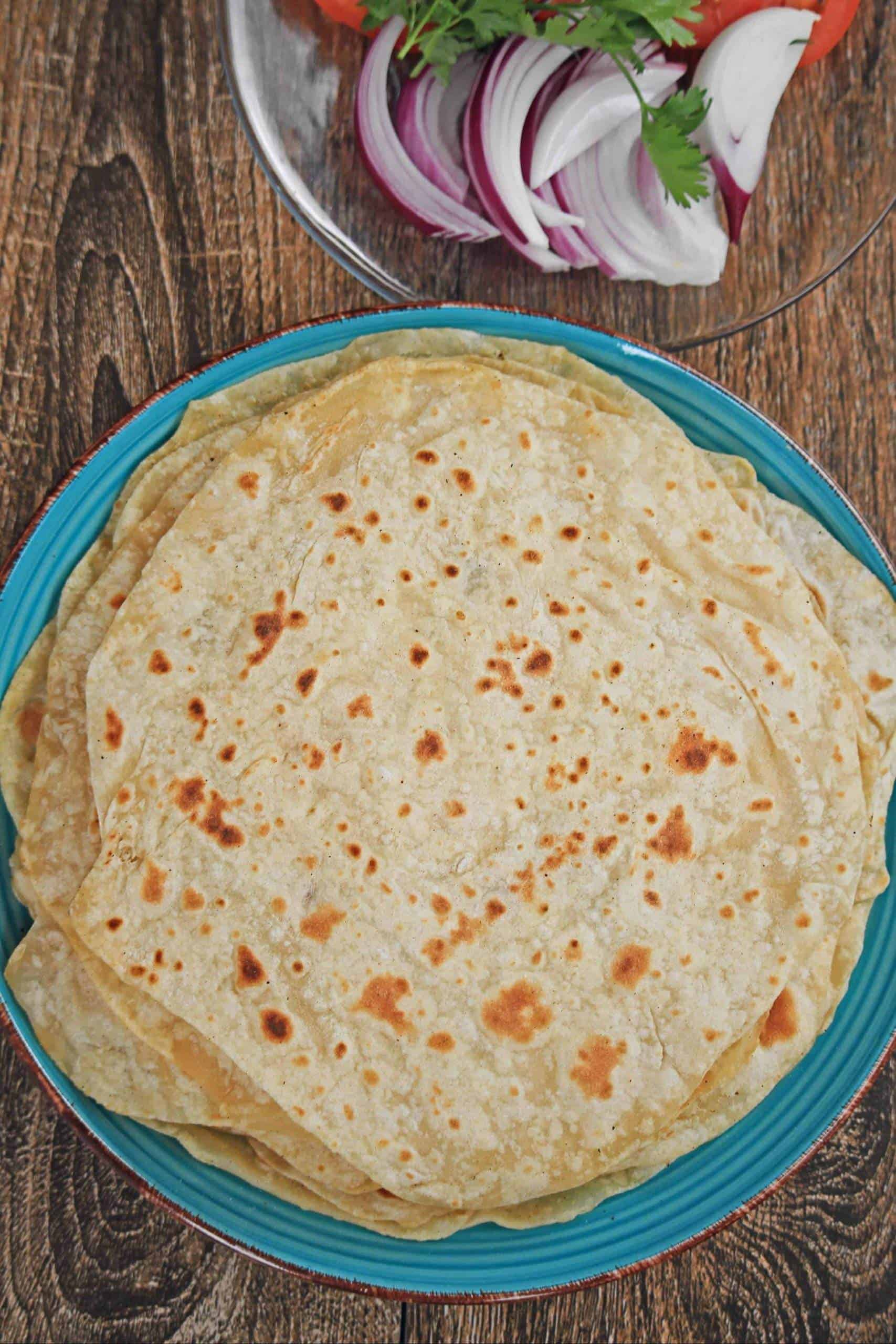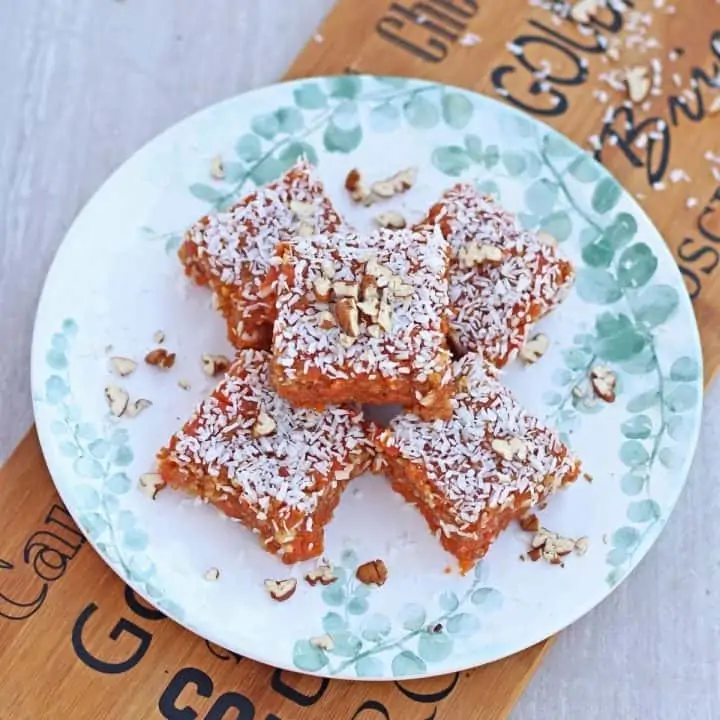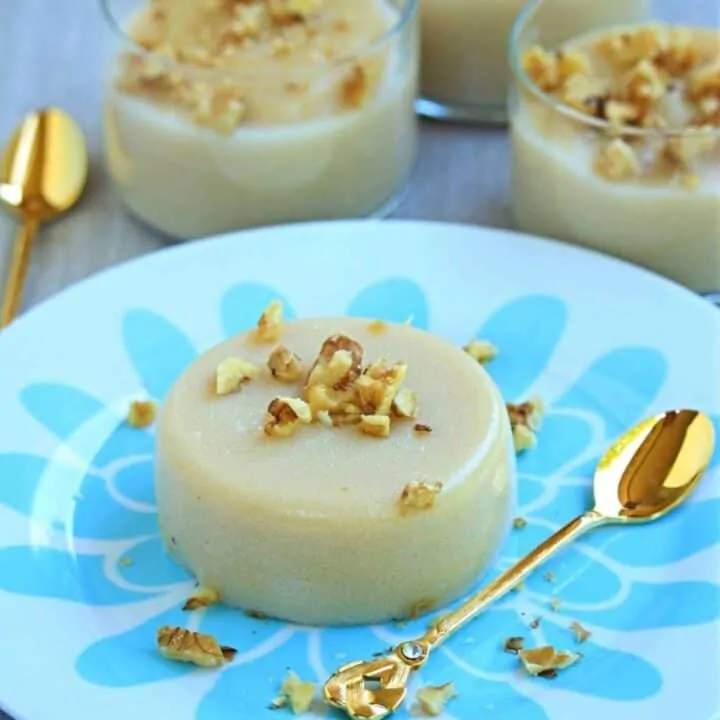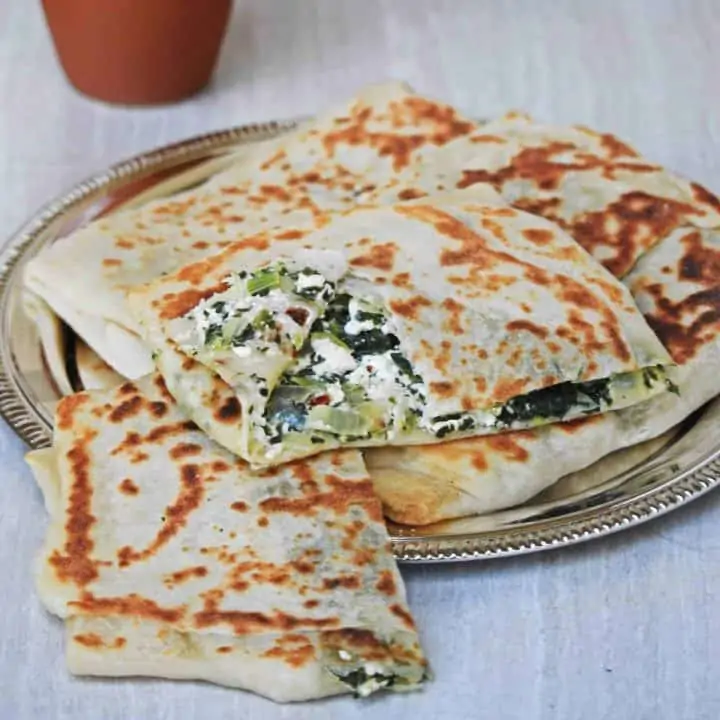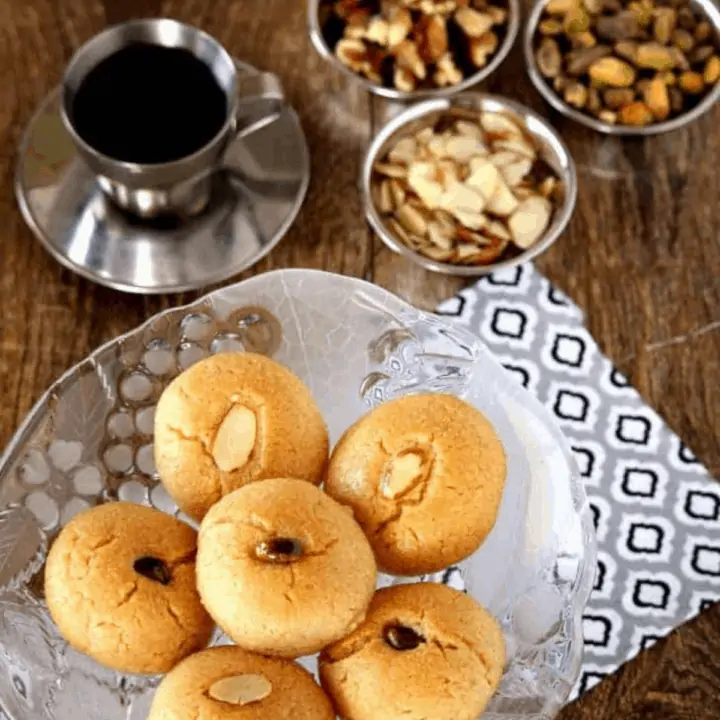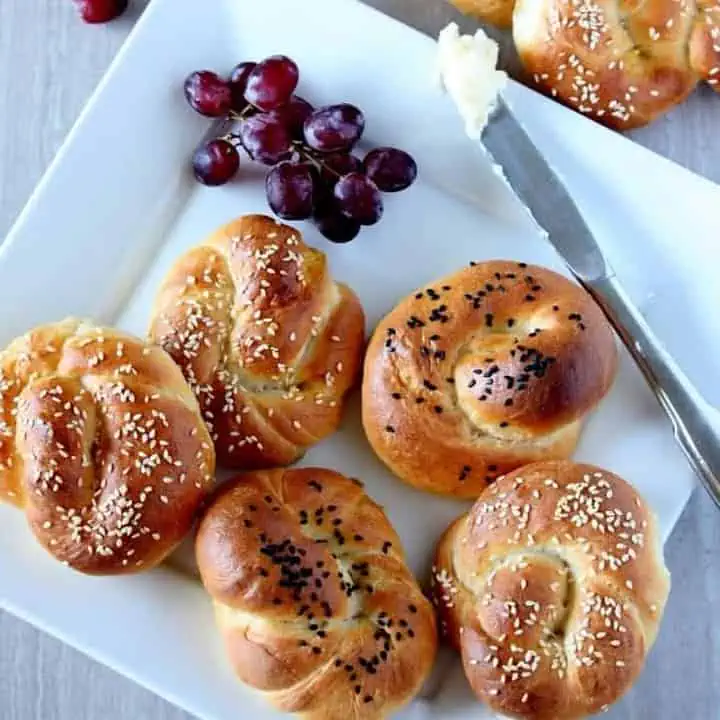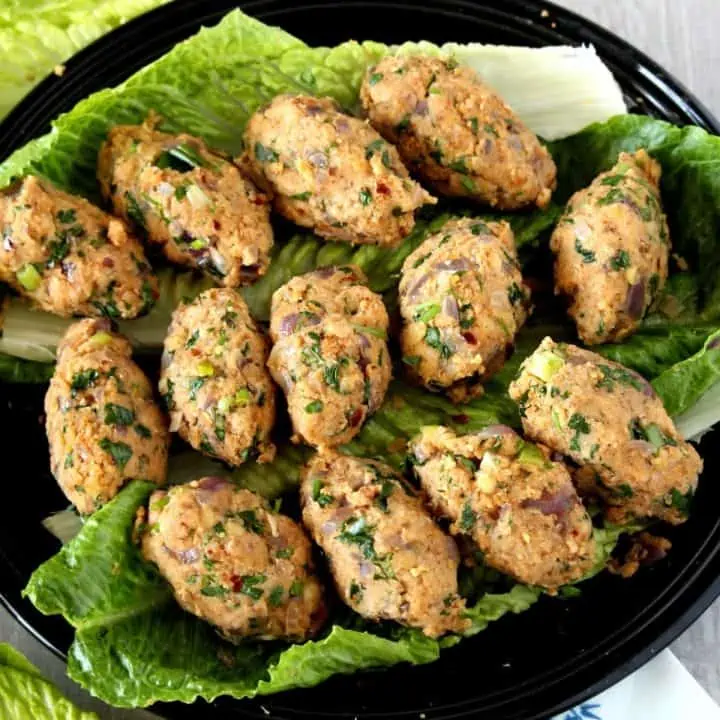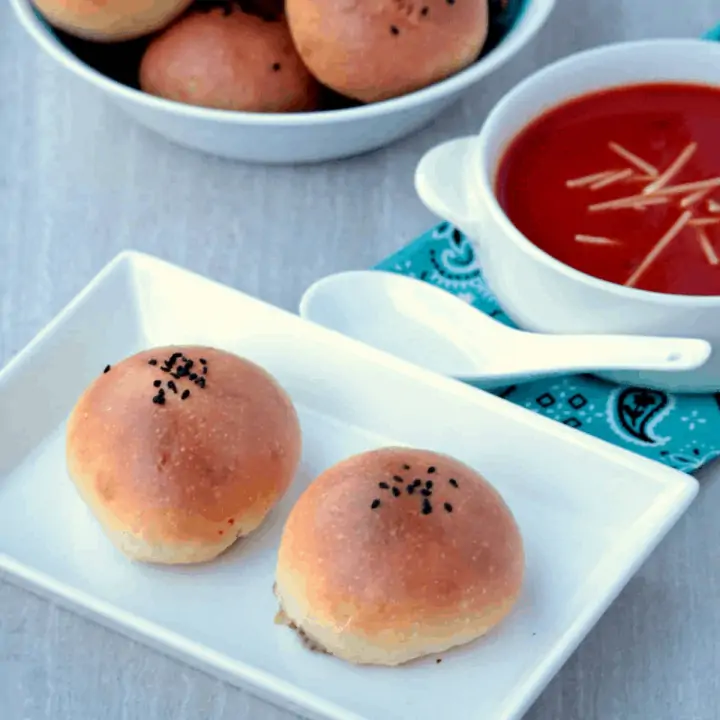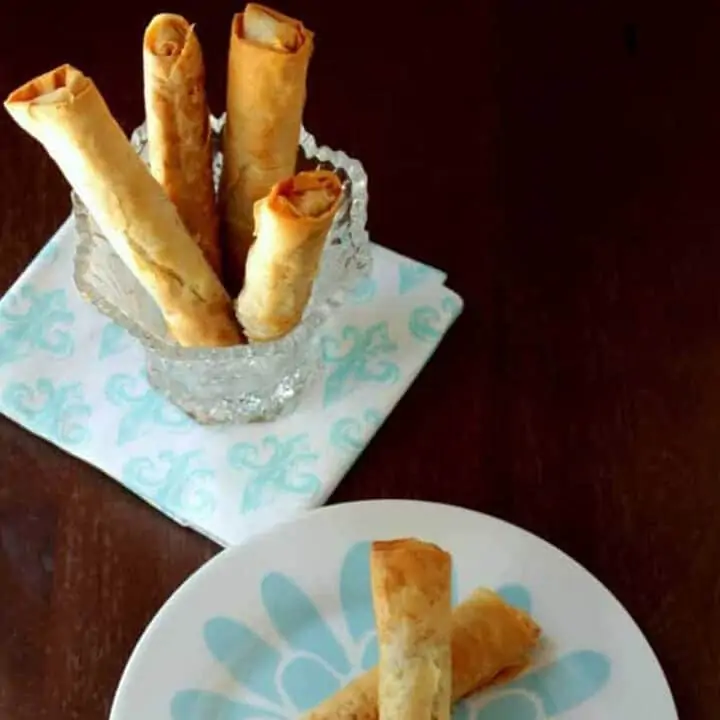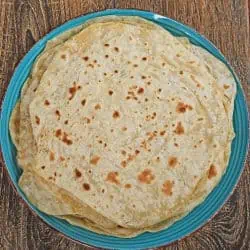Yufka is an unleavened flatbread from Turkish cuisine. They are very thinly rolled flatbread almost resembling pastry sheets and are used for layering in some desserts. The Yufka is very similar to Lavash and uses just the basic ingredients like flour, salt, oil, and water. The yufka is rolled very thin and then cooked on a heavy iron plate called Sac. I used a heavy flat pan to cook the yufka. These flatbreads can become very hard and dry if not served immediately. To make it soft again, it is sprayed with warm water and rested for a few minutes in between a kitchen cloth and then served. We can use the Yufka flatbread as a wrap or also serve it with a spicy side dish. The shelf life of this flatbread is quite long as they are quite dry in texture. They can be kept sealed tightly inside an airproof wrap and can be sprayed with warm water and rested just before serving.
Ingredients needed
All Purpose flour - 1 ½ cups Salt - 1 tsp Olive oil - 2 TBSP Warm Water - as needed to make a soft dough
Step-by-step process
In a wide bowl, add the flour and the salt. Mix well to combine.
Slowly add the warm water to form a dough.
Add the olive oil and start kneading the dough until it is very soft and smooth.
Cover the dough and let it rest for about 4 hours or even overnight. The longer it rests, the easier it is for us to roll as we have to roll the dough really thin.
Once the dough is rested, divide the dough into 10 equal pieces.
Let the dough balls rest for about 15 minutes.
Dusting each ball with enough flour, start rolling the dough. Roll it as thin as possible without tearing the dough.
If the dough resists rolling, rest it for a few more minutes and then roll again.
Heat a heavy pan and cook the rolled Yufka on medium-high heat until golden brown on both sides.
Remove from heat and keep in between kitchen cloth until ready to serve.
The yufka tends to harden very quickly. It can be sprayed/sprinkled with warm water before serving to soften it.
Expert Tips
Resting the dough is very important. The more it rests, the easier it is to roll the flatbread. Resting allows us to roll the yufka really thin which is the special characteristic of this Turkish flatbread. When rolling, if the dough resists and rolls back, let it rest for a few minutes and then roll again. Cooking the yufka on a heavy pan is essential. Keep the cooked flatbread covered until ready to serve.
Frequently asked questions
More Turkish Recipes
If you made this recipe and liked it, give a star rating on the recipe card or let me know in the comments below. You could also share it with me on Instagram using #MyCookingJourney and tagging me @sandhya.ramakrishnan. You could follow me and my recipes on Facebook |Instagram | Pinterest | twitter B for Boulanee Katchalu C for Chickpea Flatbread / Socca D for Dhal Puri E for Emirati Khameer F for Fruit Focaccia G for Gozleme H for Himbasha I for Indian Fry Bread J for Janta Roti K for Ka’ak L for Lepinja M for Mahjouba N for Norwegian Crisp Bread O for Onion and Poppy Seed Pletzel P for Pol Roti Q for Qutab R for Roomali Roti S for Samoon T for Taftan bread U for Uyghur flatbread V for Veechu Parotta W for Whole Wheat Phulka X for Xian Bing
Recipe

